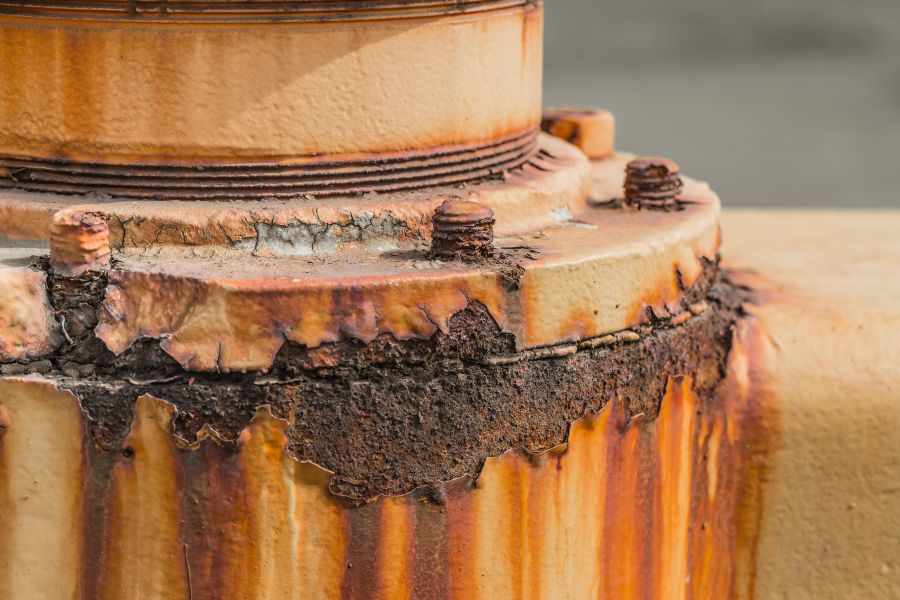Service 1st Protection LLC provides nitrogen inerting services in Phoenix, AZ. Corrosion is the silent destroyer lurking inside fire protection systems. Whether you manage a commercial property or oversee facility safety, understanding how to achieve corrosion resistance and maintain system reliability could save tens of thousands of dollars and, more importantly, ensure safety when every second counts. As you continue reading, we’ll cover how quickly corrosion can devastate fire protection systems. You’ll also learn how we can help you implement lasting solutions. If you’re looking for professional assistance, contact us today for service.

How Quickly Corrosion Destroys a Fire Protection System
Most people assume their sprinkler or fire suppression system will work when needed. Yet, corrosion can silently eat away at pipes and components, leading to leaks, blockages, and reduced pressure. Studies show that, in Phoenix and other dry climates with periodic humidification, corrosion can start in new systems in less than a year. Pinholes, wall thinning, and build-up from corrosion by-products can make a once-reliable setup fail without warning. Key corrosion contributors in fire protection systems include the following:
- Oxygen in trapped air: Oxygen reacts with metal, forming rust and scale inside pipes.
- Microbiologically influenced corrosion (MIC): Bacteria thriving in isolated water pockets accelerate component damage.
- Standing water: Residual water and humid conditions foster ongoing corrosion even after draining.
Learn How to Preserve Your System
To ensure proper corrosion protection, you need a proactive, staged approach. Routine maintenance alone isn’t enough when environmental factors, system design, or material choices stack the odds against you. Here are the following steps you should take to preserve your system:
- Schedule regular inspections: Identify corrosion risks before they become costly problems.
- Test water quality: Untreated or harsh water accelerates damage. Laboratory testing helps you tailor treatments.
- Drain systems properly: Trapped water breeds corrosion and bacteria.
- Employ corrosion inhibitors: Specialized chemicals can slow corrosion, but only help so much against oxygen-induced oxidation.
- Use oxygen removal methods: Reducing oxygen content, especially during initial system fill, is one of the most effective long-term solutions.
Implementing Corrosion Solutions
One of the most reliable advancements in corrosion resistance is nitrogen inerting. This proven solution uses dry nitrogen to replace oxygen inside your sprinkler pipes and prevent rust. Consider the following benefits of nitrogen inerting for corrosion protection purposes:
- Reduces oxygen content: Without oxygen, the main chemical driver of corrosion is neutralized.
- Controls microbiologically influenced corrosion (MIC): Many harmful bacteria need oxygen to thrive.
- Extends system life: Nitrogen inerting has been shown to prolong the lifespan of fire sprinkler systems, reducing replacement frequency.
- Decreases risk of unexpected leaks: By combating pinhole formation, facilities see fewer surprise leaks and property damage incidents.
- Lowers maintenance costs: Fewer corrosion-related failures mean fewer unplanned repairs and service interruptions.
How Does Nitrogen Inerting Work?
Nitrogen inerting is an advanced method used to protect fire sprinkler systems from the damaging effects of oxygen-induced corrosion. By replacing oxygen within the system with nitrogen, this technology helps maintain the integrity and functionality of sprinkler systems over time. Take the following steps when following this process:
- Purge the existing air and residual moisture from the fire protection system.
- Introduce dry nitrogen until optimal oxygen levels are reached.
- Monitor and maintain system integrity using nitrogen monitors and regular checks.
The Choice Between Repairing or Replacing
Faced with active corrosion, organizations often ask whether to repair sections of a fire protection system or replace entire segments. This is not a decision to make lightly. Here are some thoughts to consider when deciding which route to take:
- Repairing is sometimes the right choice for localized corrosion, newer systems, or when damage is detected early. Repair jobs are usually faster and less disruptive for active facilities.
- Replacing becomes necessary when corrosion is widespread, repeated leaks have occurred, or system performance is compromised. Replacement may involve new piping, improved drainage layout, or integrating nitrogen inerting from the start.
- Factors include the age and material of the existing system, inspection results and corrosion type, regulatory codes and insurance requirements, and the long-term budget and expected growth.
Protect Your Investment With Professional Guidance
Corrosion can undermine even the best fire protection strategies, but proactive measures and modern solutions make a real difference. Nitrogen inerting is a game-changing advance in corrosion resistance, helping businesses anywhere in Arizona gain peace of mind. If you’re facing corrosion challenges or want to prevent future issues, Service 1st Fire Protection LLC is here to help. We’ll review your system, recommend tailored corrosion protection strategies, and provide installation or upgrades. Don’t wait for a system failure to determine your protections are compromised. Schedule a consultation with our Phoenix-based experts today.